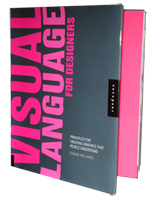
Ever since PowerPoint created the slide title area holding one line of text, presenters never looked back. It made sense, right? A succinct phrase at the top of a slide summarizes or points to the slide’s content. From a design perspective, this simple, concise and clear title became a convention. Whether justified to the left or right, or centered, the slide’s titles consists of one short phrase.
Well, we apparently have it all wrong if we want the audience to remember the presentation content. This is because full sentences are more effective at increasing the retention of information than short phrases. The reasons?
- Full sentences are better at orienting the audience to the purpose of the slide.
- Complete sentences enable the presenter to emphasize the most important slide detail.
- Sentence headlines are at the top of the visual hierarchy and make use of standard techniques for emphasis, such as large point size and boldface type.
- Because the bullets in the body of the slide are usually at the same level, they create a flat hierarchy. This makes the title stand out even more.
- When the main point is in the headline, subordinate information is more likely to be excluded perceptually. This makes it easier for the audience to remember the content.
- It’s likely that when viewers store sentence titles into long-term memory, the titles are”tagged” as an important detail.
Source: Michael Alley et. al., How the Design of Headlines in Presentation Slides Affects Audience Retention. Technical Communication, May 2006.


{ 2 comments… read them below or add one }
I think Alley’s Assertion-Evidence Slide Design Model is a great evidence-based contribution to slide/presentation design but its not the best solution for every slide.
It works better for powerfully presenting evidence-based assertions than for content that would be better served through a storytelling narrative or a gallery. Have you come across any matrices that present design model/purpose?
Your after slide is one of the most subtle examples of an assertion-evidence slide I’ve seen! I’ll be able to use it to help students move from Alley’s examples to the design of more age/experience appropriate visuals.
Thanks for your input, Mark. I do agree that Assertion-Evidence doesn’t work for every type of slide. I believe Ailey is an engineer. As to a matrix of design/model purpose, I do not know of one. Seems like it an interesting challenge to develop.